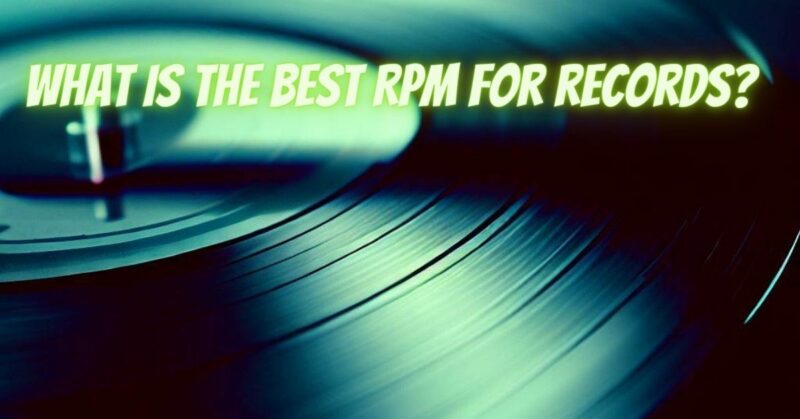As you step into the captivating world of vinyl records, one of the crucial decisions you’ll encounter is selecting the best RPM (Revolutions Per Minute) for your records. The RPM determines the playback speed of the record on your turntable, influencing the sound quality and overall listening experience. In this article, we explore the common RPM options available for vinyl records and provide insights to help you find the perfect groove for your musical journey.
1. Common RPM Options: The three most common RPM options for vinyl records are:
- 33 1/3 RPM (Revolutions Per Minute): This is the standard speed for most vinyl LPs (Long Play) and offers a playing time of around 20 to 25 minutes per side. It is the preferred speed for full-length albums and immersive listening experiences.
- 45 RPM (Revolutions Per Minute): This speed is commonly used for 7-inch records and offers a playing time of approximately 3 to 5 minutes per side. 45 RPM records are often used for singles and shorter musical compilations.
- 78 RPM (Revolutions Per Minute): A vintage format primarily used for early commercial recordings, 78 RPM records can accommodate around 3 to 5 minutes of music per side. They are less common today but are cherished for their historical value and collectibility.
2. Choosing the Best RPM: Selecting the best RPM for your records depends on various factors, including the format of the music and your personal preferences:
- Full Albums: For immersive listening experiences and the joy of enjoying an artist’s complete work, 33 1/3 RPM records are the preferred choice. The longer playing time allows for multiple tracks to be presented seamlessly on each side, making them ideal for full albums.
- Singles and Short Releases: If you prefer individual songs or shorter musical compilations, 45 RPM records are commonly used. This speed provides ample space on each side for one to three songs, making it suitable for singles and EPs.
- Vintage Records: If you have vintage 78 RPM records, make sure to set your turntable to the correct speed for an accurate playback.
3. Sound Quality and Playback Performance: Both 33 1/3 RPM and 45 RPM records can deliver excellent sound quality when mastered and pressed properly. The choice of RPM does not inherently determine sound quality; rather, it influences factors such as groove width, sound density, and tracking performance.
4. Turntable Compatibility: Before choosing the RPM, ensure that your turntable supports the speed you intend to use. Most modern turntables offer selectable speeds for 33 1/3 RPM and 45 RPM, but not all turntables can accommodate 78 RPM records.
The best RPM for your records is a matter of personal preference and the specific musical journey you wish to embark upon. Whether you opt for the immersive energy of 33 1/3 RPM, the vibrant charm of 45 RPM, or the nostalgic allure of vintage 78 RPM records, each speed offers a unique and captivating listening experience. Embrace the enchanting world of vinyl records, and let the soulful melodies and analog allure take you on a melodic journey through the timeless magic of music. Happy spinning!


